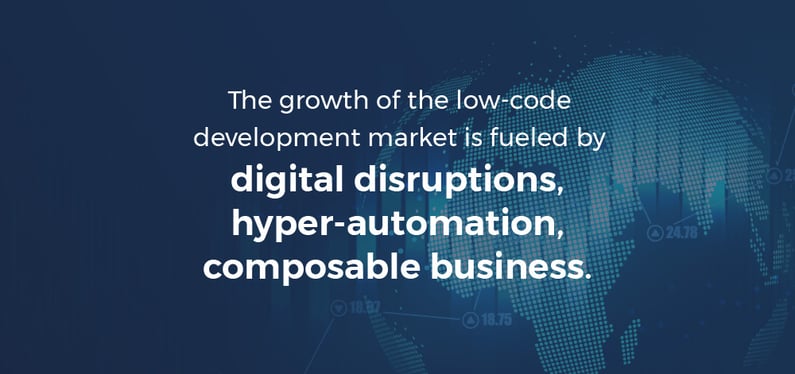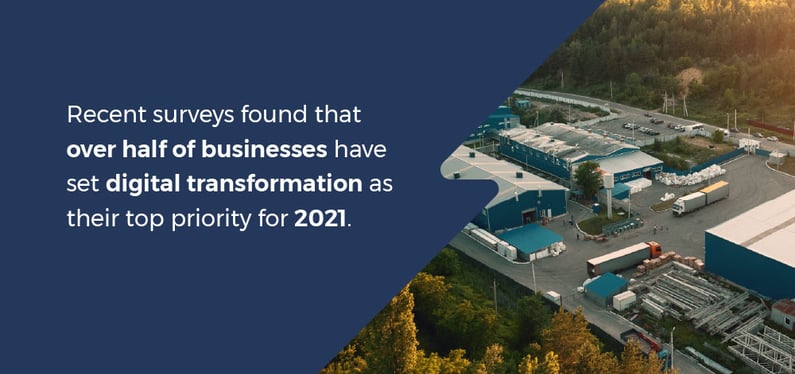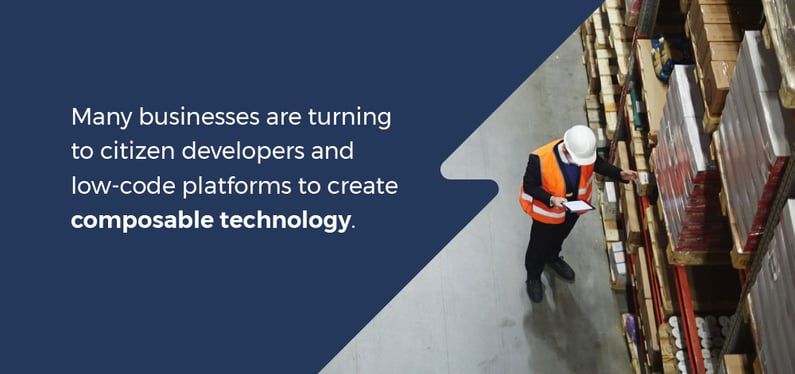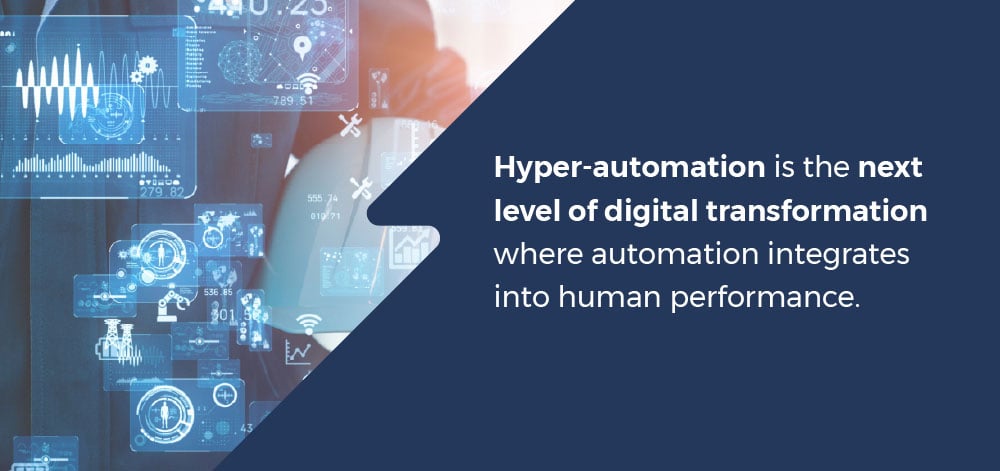According to Gartner, the low-code development market is predicted to reach a worldwide total of $13.8 billion in 2021. The low-code application platforms (LCAP) are expected to retain the largest percentage of that market through 2022. The platforms are forecast to increase nearly 30% over 2020 to almost $6 billion in 2021. Gartner's research shows this growth is fueled by digital disruptions, hyper-automation, and composable business.

Digital Disruption
Companies have been working towards digital transformation for years. Recent surveys found that over half of businesses have set digital transformation as their top priority for 2021. That trend is not surprising, given the worldwide disruption in 2020.
The adoption of digital-first business strategies accelerated in 2020 with many organizations supporting remote workers and online customers. It's estimated that 2020 saw businesses advance their digital implementations by 3 to 5 years. To meet the changing landscape, companies deployed new technologies to help improve operations and contribute to better decision-making. Part of those changes were brought about through low-code platforms. Gartner found that 41% of employees outside of IT customize or build applications. Whether it is building macros in Excel or creating a low-code application, non-technical staff are finding ways to deploy digital solutions.

Low-Code Platforms
Low-code platforms are development tools designed to deliver applications created by developers and non-developers. The platforms use graphical interfaces instead of lines of code to automate the development process. The LCAPs significantly increase the speed at which developers create applications. Citizen developers with limited programming skills can create solutions using low-code technologies, making for faster delivery of business applications. By deploying advanced technologies, organizations can navigate digital disruption to develop composable business models and hyper-automation operations.

Composable Business
Recent experience has taught organizations that static processes make it challenging to respond to rapid changes in how business gets done. Despite concentrated efforts, companies still struggle to respond to the increased demand for digital solutions that accelerate delivery speed and time to value of applications. Many businesses are turning to citizen developers and low-code platforms to create composable technology.
Composable Technology
Unlike legacy systems, where large applications are self-contained, composable technology uses packaged business capabilities to build infrastructures that can adapt to rapid change. For example, organizations assemble APIs to connect various applications so that data can be placed in a shared location. When data from another application needs to be sent to the shared location, an API, an example of a packaged business capability, is deployed that allows the application to transmit data to the central location. No major rewrite of existing code is required.
The composable approach enables companies to rapidly change configurations or add functionality by re-assembling capabilities. With ongoing business disruption, enterprises must employ tools that make them more resilient and more agile to sustain growth. Low-code platforms provide the packaged capabilities to address the need to increase delivery and time to value of business applications.
Composable Architecture
Composable business needs composable architecture. Such a business infrastructure creates an environment that exploits disruption by focusing on the following:
- Modularity. Mixing and matching business capabilities to create greater agility
- Orchestration. Aligning skills to develop more effective leadership
- Discovery. Identifying needed changes for rapid deployment
- Autonomy. Enabling individualized action for more resilience
These four principles are essential for a composable business, according to Gartner's Daryl Plummer. With low-code platforms, organizations can build composable architectures that embody the principles of modularity, discovery, and autonomy.

Hyper-Automation
Hyper-automation refers to the use of advanced technologies such as machine learning or robotic automation processes to automate tasks performed by humans. It is the next level of digital transformation where automation integrates into human performance. With tools such as low-code platforms, individuals have the ability to deliver solutions that would not be available without hyper-automation.
Hyper-automation as a business strategy offers an enterprise the following benefits.
- Flexibility. Hyper-automation means using different automation technologies in an integrated environment. Organizations are no longer subject to vendor lock-in and can achieve greater flexibility and scaling than with single automation tools.
- Improved Productivity. Hyper-automation such as low-code platforms make employees more productive. Developers can deliver applications faster because LCAPs eliminate many routine coding tasks. Hyper-automation is an example of doing more with fewer resources without compromising the customer or employee experience.
- Integration. Hyper-automation enables organizations to move forward on their road to digital transformation. With advanced technologies, companies can integrate legacy systems and processes into evolving systems that give employees access to data for making more informed business decisions.
- Better ROI. Hyper-automation using advanced technologies such as artificial intelligence can optimize resources to increase revenue and reduce costs. With fewer employees performing routine tasks, organizations can realize the full potential of their human assets as well as their technical resources.
Low-code technology provides that next level of digital tools that allow for more effective use of resources enabling organizations to become more agile. They empower technical and non-technical staff to participate in application development, giving more autonomy to functional groups.
Low-Code Adoption
Software-as-a-Service (SaaS) business models incorporate low-code development technologies. This trend will only expand as SaaS becomes more accepted. LCAPs will grow as the desire for hyper-automation tools increases. Future development is destined to move beyond the IT department.
Employees want the opportunity to contribute or add value to business applications and workflows, especially in environments when the IT department is overwhelmed, and development requests take months to complete. The result will be an increased demand for low-code development. With more organizations experiencing the impact low-code has on digital transformation, the market will continue to grow. As Mr. Biscotti suggests,
"Globally, most large organizations will have adopted multiple low-code tools in some form by year-end 2021. In the longer term, as companies embrace the tenets of a composable enterprise, they will turn to low-code technologies that support application innovation and integration."
To learn more about how low-code platforms can move your digital transformation to the next level, contact us.

WRITTEN BY: Reggie Rusan | Chief Technology Officer



COMMENTS